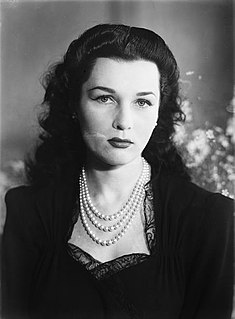
Fawzia of Egypt, also known as Fawzia Chirine, was an Egyptian princess who became Queen of Iran as the first wife of Mohammad Reza Pahlavi, Shah of Iran.
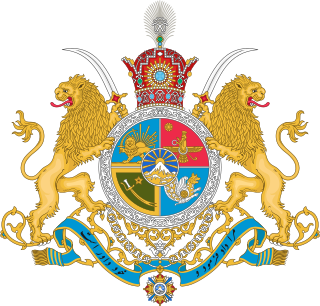
The Pahlavi dynasty was the last Iranian royal dynasty, ruling for almost 54 years between 1925 and 1979. The dynasty was founded by a non-aristocratic Mazanderani soldier in modern times, who took on the name of the Pahlavi language spoken in the pre-Islamic Sasanian Empire in order to strengthen his nationalist credentials.

Reza Pahlavi is the oldest son of Mohammad Reza Pahlavi, the last Shah of Iran, and his wife Farah Diba. Prior to the Iranian Revolution in 1979, he was the crown prince and the last heir apparent to the throne of the Imperial State of Iran.

Tâdj ol-Molouk was an Iranian royal, who was the Queen of Iran as the wife of Reza Shah, founder of the Pahlavi dynasty and Shah of Iran between 1925 and 1941. The title she was given after becoming queen means "Crown of the Kings" in the Persian language. She was the first queen in Iran after the Muslim conquest in the seventh century to have participated in public royal representation, and she played a major role in the kashf-e hijab in 1936.
The NATO Medal is an international military decoration which is awarded to various militaries of the world under the authority of the North Atlantic Treaty Organization (NATO). It is manufactured by Eekelers-Centini Intl, of Hemiksem, Belgium.

Shahnaz Pahlavi is the first child of the Shah of Iran, Mohammad Reza Pahlavi, and his first wife, Princess Fawzia of Egypt.

The Afghanistan Medal was instituted by Queen Elizabeth II, Queen of Australia on the advice of the Australian Prime Minister John Howard in 2004. It is awarded to Australian defence force personnel who served in or around Afghanistan after 11 October 2001. Defence force personnel are also recognised by the 'ICAT' clasp to the Australian Active Service Medal and the North Atlantic Treaty Organisation's Non-Article 5 Medal with 'ISAF' clasp.
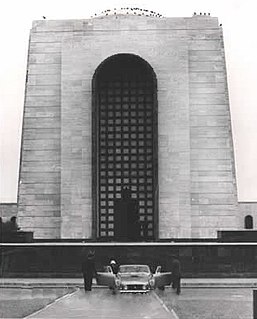
The mausoleum of Reza Shah, located in Ray south of Tehran, was the burial ground of Reza Shah Pahlavi (1878–1944), the penultimate Shahanshah (Emperor) of Iran. It was built close to Shah-Abdol-Azim shrine.

Mohammad Reza Pahlavi, also known as Mohammad Reza Shah, was the last Shah (King) of the Imperial State of Iran from 16 September 1941 until his overthrow in the Iranian Revolution on 11 February 1979. Owing to his status, he was also known as the Shah.

The Order of Pahlavi of the Empire of Iran, in Persian: "Neshan-e Pahlavi" was the highest order of the former Imperial State of Iran.
The Most Exalted Order of the Crown of the Realm is a Malaysian federal award. It is ranked lower than the Order of the Royal Family of Malaysia.
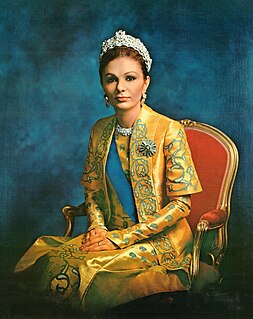
Farah Pahlavi is the widow of the last Shah of Iran, Mohammad Reza Pahlavi, and was successively Queen and Shahbanu of Iran from 1959 to 1979. She was born into a prosperous family whose fortunes were diminished after her father's early death. While studying architecture in Paris, France, she was introduced to the Shah at the Iranian embassy, and they were married in December 1959. The Shah's first two marriages had not produced a son—necessary for royal succession—resulting in great rejoicing at the birth of Crown Prince Reza in October of the following year. Diba was then free to pursue interests other than domestic duties, though she was not allowed a political role. She worked for many charities, and founded Iran's first American-style university, enabling more women to become students in the country. She also facilitated the buying-back of Iranian antiquities from museums abroad.
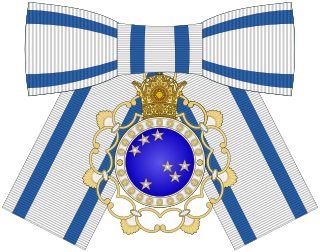
The Order of the Pleiades, also named Order of Haft Paykar, was an all-female order of the former Imperial State of Iran.

The New Zealand General Service Medal 2002 (Afghanistan) is a campaign medal of New Zealand that recognizes service in the War in Afghanistan. The Queen of New Zealand authorized the creation of a new General Service Medal for the recognition of service taking place after December 2001 with a royal warrant on 23 July 2002. Regulations to establish the NZGSM 2002 (Afghanistan) were published 16 January 2003.
The Republic of Senegal awards the following orders, decorations and medals.
The Most Glorious Order of Ojaswi Rajanya was an order of knighthood of Nepal. It was given to foreign heads of state, foreign or Nepalese monarchs.

The Order of al-Hussein bin Ali is the highest order of the Kingdom of Jordan. It was founded on 22 June 1949 with one class by King Abdullah I of Jordan with the scope of rewarding benevolence and foreign Heads of State. The class of Grand Cordon was introduced by King Hussein on 23 September 1967.

The Order of Oman is the second highest order of Oman.
The following lists events that happened during 1960 in the Imperial State of Iran.
This page is based on this
Wikipedia article Text is available under the
CC BY-SA 4.0 license; additional terms may apply.
Images, videos and audio are available under their respective licenses.














